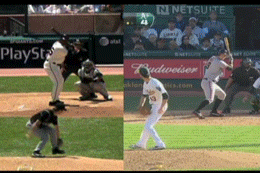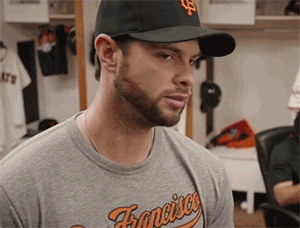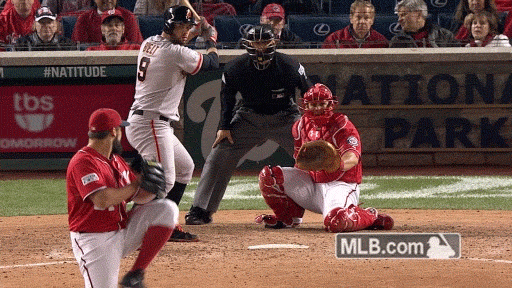How Valuable Is the First Selection In the MLB Draft?
Pop Quiz: What do Andrew Wiggins of the Minnesota Timberwolves (2014), Andrew Luck of the Indianapolis Colts (2012), and Connor McDavid of the Edmonton Oilers (2015) have in common? Answer: They are all recent household names that were chosen with the first overall pick in their respective draft class. Yet, unlike the National Basketball Association (NBA), the National Football League (NFL), and the National Hockey League (NHL), much less attention is paid to the first-year player draft by fans in the Major League Baseball. Correspondingly, not withstanding exceptions such as Stephen Strasburg and Bryce Harper of the Washington Nationals, there is also considerably less hype associated with the first overall selection in the Rule 4 draft on the whole. As America’s Pastime, how is it possible that the grand old game’s annual amateur drafts consistently fall behind the other three North American major professional sports when it comes to media exposure? Why is it that interests among fans on the top pick of MLB drafts pale in comparison to that of the NBA, NFL, and the NHL?
Several explanations have been presented by analysts, including the fact that:
- the majority of potential top draftees, typically comprised of high school and college student athletes, were “unknowns” to the lay public because high school and college baseball are nowhere near as popular as college football, college basketball, and college/junior hockey;
- high MLB selections would almost certainly be assigned to minor league-affiliated ballclubs (either Rookie or Class A) in order to refine their skill sets whereas top draft picks in the NHL, NBA, and NFL have a good chance of starring in their leagues right away in their draft year; and
- the overwhelming majority of prospects taken in the first-year player draft, including numerous first-round picks, would end up never appearing in a single MLB game whereas significantly more drafted players in the NHL, NBA, and NFL, including some of those who are late-round selections, would reach their destiny in due course. Although these assumptions all have merits to various degree, I construe that the dual trends are the direct result of the more volatile nature of the first-year player draft (relatively speaking in comparison to the NBA Draft, the NFL Draft, and the NHL Entry Draft), which makes the process more difficult to yield a “can’t-miss” generational player when compared to the other three North American major professional sports.
All-Stars:
Dating back to the first Rule 4 Draft in 1965, there has been a total of fifty-one first overall selections. To this date, this short list has produced twenty-three All-Stars:
- Rick Monday, drafted by the Kansas City Athletics in 1965;
- Jeff Burroughs, chosen by the Washington Senators in 1969;
- Floyd Bannister, selected by the Houston Astros in 1976;
- Harold Baines, picked by the Chicago White Sox in 1977;
- Bob Horner, drafted by the Atlanta Braves in 1978;
- Darryl Strawberry, chosen by the New York Mets in 1980;
- Mike Moore, selected by the Seattle Mariners in 1981;
- Shawon Dunston, picked by the Chicago Cubs in 1982;
- B.J. Surhoff, drafted by the Milwaukee Brewers in 1985;
- Ken Griffey, Jr., chosen by the Seattle Mariners in 1987;
- Andy Benes, selected by the San Diego Padres in 1988;
- Chipper Jones, picked by the Atlanta Braves in 1990;
- Phil Nevin, drafted by the Houston Astros in 1992;
- Alex Rodriguez, chosen by the Seattle Mariners in 1993;
- Darin Erstad, selected by the California Angels in 1995;
- Josh Hamilton, picked by the Tampa Bay Devil Rays in 1999;
- Adrian Gonzalez, drafted by the Florida Marlins in 2000;
- Joe Mauer, chosen by the Minnesota Twins in 2001;
- Justin Upton, selected by the Arizona Diamondbacks in 2005;
- David Price, picked by the Tampa Bay Rays in 2007;
- Stephen Strasburg, drafted by the Washington Nationals in 2009;
- Bryce Harper, chosen by the Washington Nationals in 2010; and
- Gerrit Cole, selected by the Pittsburgh Pirates in 2011.
By all accounts, the results are quite encouraging as the chance of landing a player who would go on to be named an All-Star at least once in their MLB career is a generous 45.10% (23/51).
Rookie of the Year Award Winners:
While All-Star selections are the benchmark of elite players, one question that we need to ask is how many of these players can actually make an immediate impact to their respective ballclubs? Historically, we should look to past American League and National League Rookie of the Year Award winners to answer this question seeing that the Rookie of the Year Award is the highest form of recognition to new players who are making contributions to their teams straight away in very meaningful ways.
Of the aforementioned fifty-one first overall picks, twenty-three of whom were named All-Stars at some point in their MLB career, only three of them were winners of the Rookie of the Year Award:
- Horner, the National League winner in 1978;
- Strawberry, the National League winner in 1983; and
- Harper, the National League winner in 2012.
Sadly, this means that the probability of choosing an eventual Rookie of the Year Award winner with the first overall selection is only 6% (3/51). Although this phenomenon could be purely circumstantial, it is noteworthy that no first overall pick (as of 2015) have ever been named as the winner of the American League Rookie of the Year Award!
National Baseball Hall of Fame:
On the other side of the spectrum, an equally interesting question is how many of the fifty-one previous first overall selections can make a long-lasting contribution to the ballclub(s) that he has played for over his MLB career. Here, we ought to look to the National Baseball Hall of Fame and Museum as being inducted into Cooperstown is the ultimate form of acknowledgment for a player in terms of honouring his sustained excellence and longevity in the big league.
Among the aforesaid fifty-one first overall selections, only one of them was ultimately enshrined into the Hall of Fame: Griffey, Jr. In other words, the odds of choosing an eventual Hall-of-Famer with the first overall pick is a minuscule 2% (1/51). That said, I gather that adjustments are needed as including first overall selections who are still active players into the computation would distort the outcomes. If we were to leave out these seventeen players who are still playing in MLB—(1) Rodriguez; (2) Hamilton; (3) Gonzalez; (4) Mauer;(5) Delmon Young, picked by the Tampa Bay Devil Rays in 2003; (6) Matt Bush, drafted by the San Diego Padres in 2004; (7) Upton; (8) Luke Hochevar, chosen by the Kansas City Royals in 2006; (9) Price; (10) Tim Beckham, selected by the Tampa Bay Rays in 2008; (11) Strasburg; (12) Harper; (13) Cole; (14) Carlos Correa, picked by the Houston Astros in 2012; (15) Mark Appel, drafted by the Houston Astros in 2013; (16) Brady Aiken, chosen by the Houston Astros in 2014 but did not sign; and (17) Dansby Swanson, selected by the Arizona Diamondbacks in 2015; out of the formula, then the possibility of being able to reap a future Hall-of-Famer utilizing the first overall pick would increase to an ever so slightly better 3% (1/34).
Cross-Sports Comparisons:
While the short-term outlook of getting an impact player who can pay immediate dividend in the form of a Rookie of the Year winner is bleak to say the least at 6%, the good news is that there is close to a coin flip (fifty-fifty) chance of drafting an All-Star player with the first overall selection of a first-year player draft at 45%. However, when it comes to the long-term outlook, the likelihood of obtaining a future Hall-of-Famer is highly improbable at 2% pre-adjusted and 3% post-adjusted.
For comparison’s sake, if we look to the left tail of the MLB and NHL distribution curves, the chance of an MLB ballclub landing a Rookie of the Year winner with the first overall pick in a Rule 4 Draft, at 6%, is a sizable 13% less (or more than three times worse) than an NHL team finding a Calder Memorial Trophy winner in an Entry Draft at 19%. Likewise, the probability of an MLB ballclub being able to draft an eventual Hall-of-Famer with the first overall selection of a first-year player draft, at 2% before adjustment and 3% after adjustment, is a considerable 11% (or nearly seven times worse) and 16% (or more than five-and-a-half times worse) less than an NHL team unearthing a Future Hall-of-Famer in an Entry Draft at 13% prior to adjustments and 19% after adjustments. Accordingly, the results seem to back up my hypothesis that the Rule 4 Draft is inherently more unpredictable when contrasted to the NBA Draft, the NFL Draft, and the NHL Entry Draft, which in turn renders the procedure of uncovering a “can’t-miss” generational player harder compared to the other three North American major professional sports.
Final Words:
Even though the likelihood of picking a player who fails to have at least a short stint in MLB is remarkably low at 4% (2/51), as only two players who were taken first overall in the first-year player draft failed to play a single MLB game — (1) Steve Chilcott, picked by the New York Mets in 1966 and (2) Brien Taylor, drafted by the New York Yankees in 1991 — the reality, much like the NHL, is that the likelihood of being able to discover that “can’t-miss” diamond in the rough appears to be an imperfect science regardless of how we break down the fifty-one first overall picks in past Rule 4 Drafts. Now do you want to choose heads or tails?
N.B. A more condensed version of this article was originally published on Obiter Dicta, 89(13), 20 and 23.











